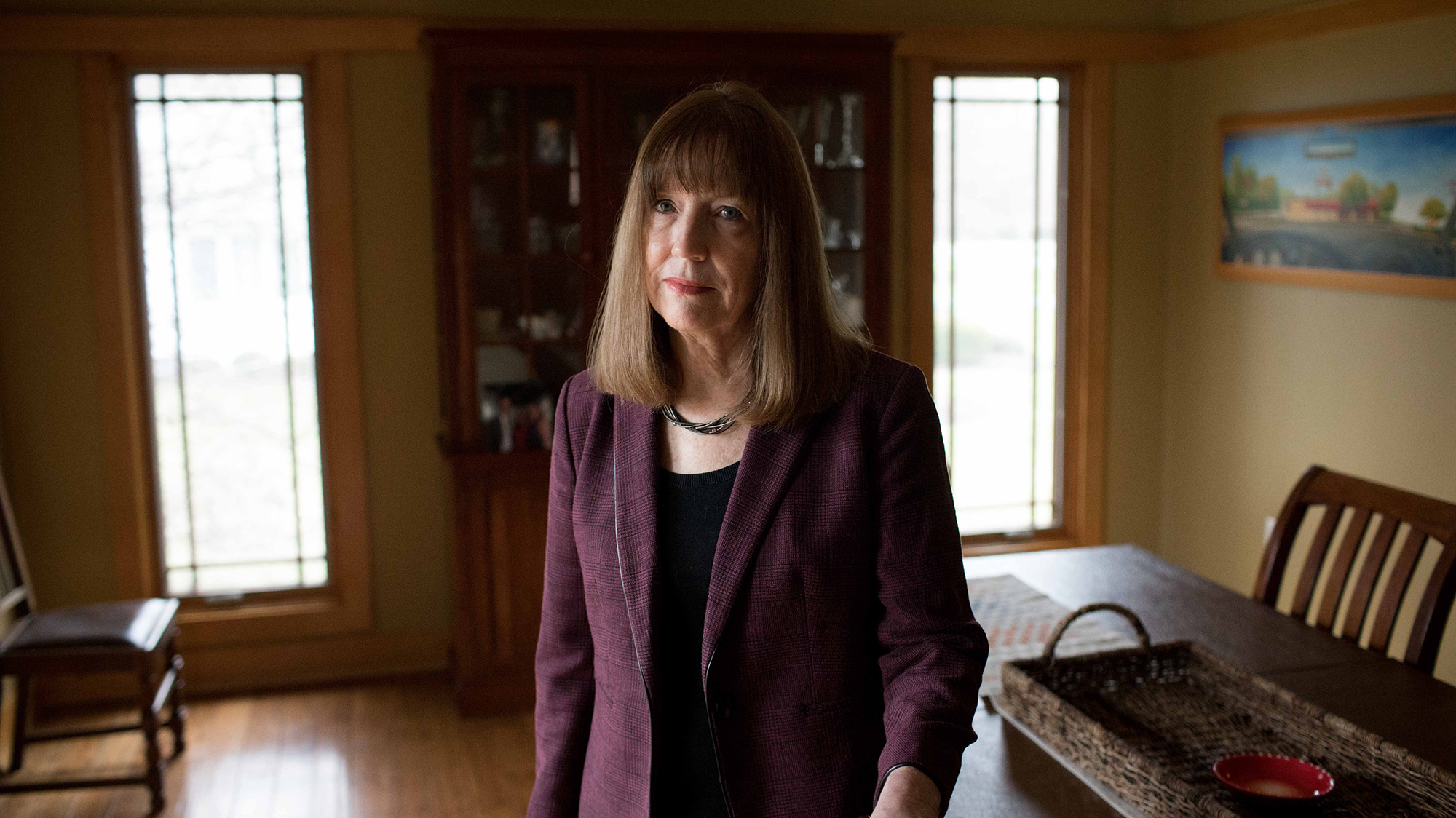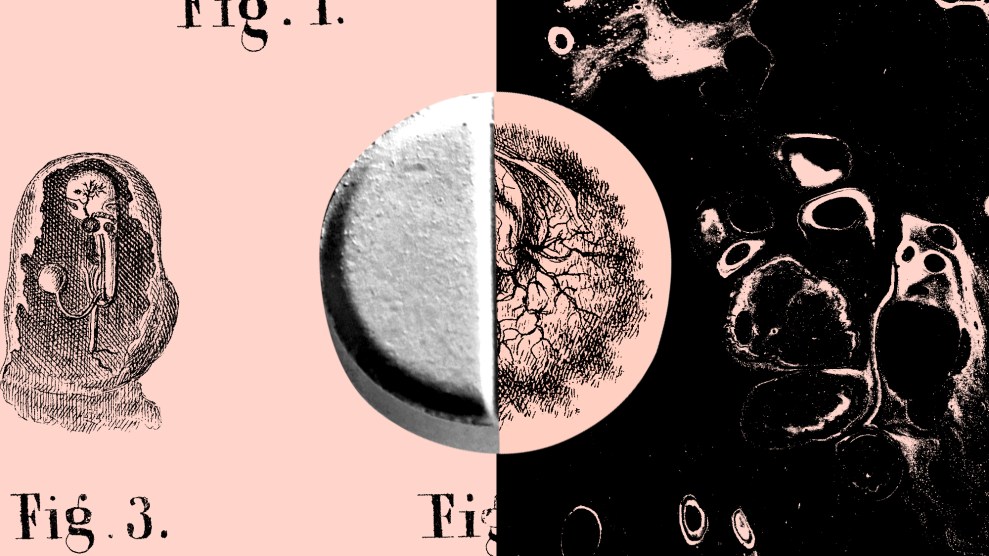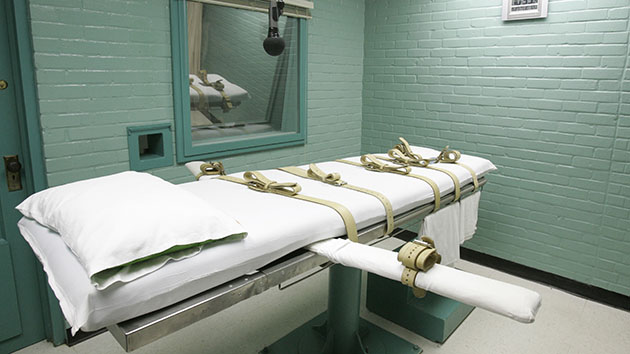In her 32 years as an advanced heart failure and transplant cardiologist, Mary Norine Walsh has seen very sick patients and many deaths. “We’re not like orthopedists who only see one in their entire career,” says Walsh, a physician at a Catholic hospital system in Indianapolis and the former president of the American College of Cardiology. Among those very sick patients are pregnant people. Over the decades, Walsh made caring for these types of patients her specialty. She became known for it, and began to receive referrals from other providers for whom pregnancy was too challenging a complication.
Walsh describes pregnancy as “nature’s stress test.” A person’s blood volume more than doubles, which can worsen preexisting conditions and expose countless new ones, such as heart disease. For instance: If a woman develops peripartum cardiomyopathy, a rare type of heart failure, she is in danger of her heart muscle weakening—a condition that could threaten her life, even in future pregnancies. Though cardiovascular issues affect only a small percentage of pregnancies, they are responsible for more than half of postpartum maternal deaths in the United States, making them the leading cause of death among pregnant people.
So when Walsh meets with sick women who are of reproductive age, she brings up contraception. If a patient is already pregnant, Walsh raises the idea of abortion. “The usual recommendation that we have with a very high-risk cardiac condition is a termination,” she says. Without one, says Walsh, her patients could die. Since Walsh doesn’t perform abortions herself, she refers women to a maternal-fetal medicine specialist to receive further care and discuss options, including termination. Walsh has spent years developing her expertise to save women’s lives—a specialty of extraordinary value given that most cardiology studies have been done on men. In some cases, her patients successfully go on to deliver babies, navigating complicated heart conditions with her help. In others, they come back to her pregnancy free, having avoided a possibly lethal health crisis.
But after the Supreme Court’s Dobbs ruling nullified the nearly 50-year-old Constitutional right to an abortion and handed the responsibility for its regulation back to the states, what was often a black and white decision to protect the life of the mother is now a grueling calculus of legal risk for doctors like Walsh.
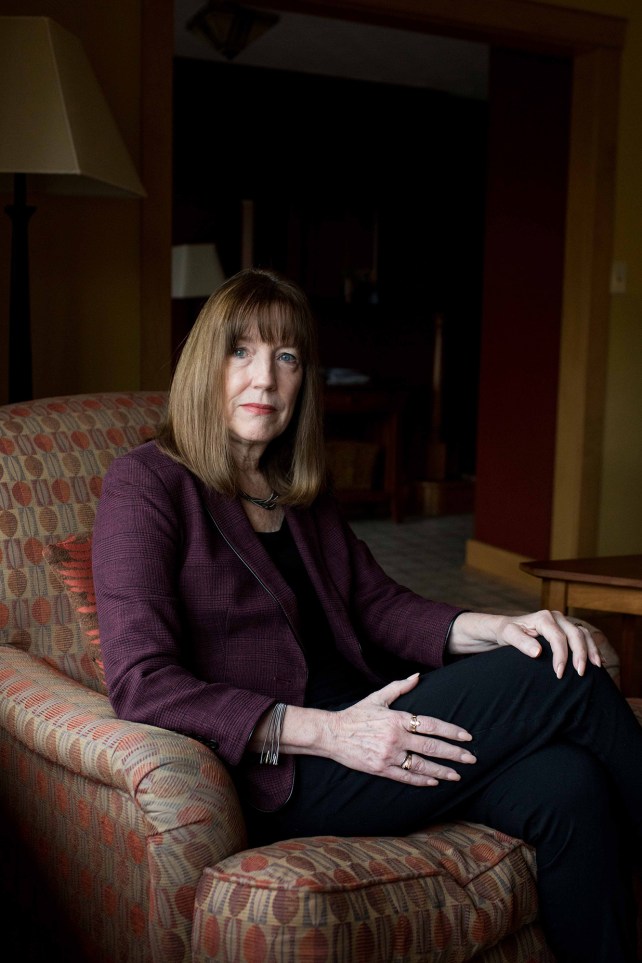
Mary Norine Walsh
Kaiti Sullivan
In September, Walsh’s home of Indiana became the first state post-Dobbs to pass a near-total ban on abortion. The law makes exceptions for pregnancies resulting from rape or incest, those that pose “any serious health risk of the pregnant woman,” and those necessary “to save the pregnant woman’s life.” But the ban requires that such abortions take place in hospitals or surgical outpatient centers, effectively shuttering the freestanding clinics that have typically performed almost all terminations in the state. It also requires that every pregnancy that doesn’t result in birth be documented to justify what took place. Feticide is already a felony in Indiana, which also has an “aiding and abetting” clause, meaning that anyone even tangentially involved in an abortion, outside the bounds of the law’s exception, could be liable—even if their connection is only that they know about it. “We call it the girlfriend rule,” because if the person’s friend knows the crime is being committed, they could be liable, says Faith Alvarez, a personal injury attorney in Indianapolis. “The act of opening the door is enough to prove criminal conspiracy.”
This sweeping liability is especially terrifying when matched with the vagueness of the exception. What exactly constitutes a “serious health risk”? It’s something Walsh grapples with. “We don’t really know what’s okay,” she told me when we met in Indianapolis. “Is it me saying the health of the mother is at risk: Is that enough? Or do I have to sign an affidavit? Do I have to produce a scientific paper?”
She doesn’t have to answer all of those questions quite yet; for now, the ban is on hold as it winds its way through various court challenges. Which means that, for at least a little while longer, Walsh can provide care the way she always has, guided by her expertise and her patient’s wishes—and not by the whims of lawmakers. But even so, the impending ban means that she must also operate in a state of perpetual uncertainty—unclear what repercussions she might one day face for her work. The state attorney general investigated a doctor who spoke publicly about providing abortions, creating a climate of fear. Around her, the landscape is already shifting to accommodate the possible ban, as patients are seeking fewer abortions, partially out of confusion about the procedure’s legality. As this new future unfolds, Walsh has found herself urging patients to figure out their birth control plans and to consider IUDs, and telling members on her team to do the same.
Pregnancy doesn’t happen in a vacuum. People who are pregnant get in automobile accidents. They have psychological disorders. They get heart disease and cancer. Before Dobbs, doctors may have told their patients in some of these situations that pregnancy could worsen whatever condition they may have and suggest the option to terminate. But because of Dobbs, abortion access all over the county has become limited and fraught with uncertainty for pregnant people and their doctors. Today, fourteen states have outlawed abortion under most circumstances, some with no exceptions, and some with unclear language around caveats to preserve the mother’s life and criminal penalties for physicians who perform the procedure. A handful of states have laws like Indiana’s that explicitly criminalize aiding and abetting abortions, making it a felony to help, while in others, providers could still potentially be liable under laws that make it illegal to help someone commit a crime. Two states have even included vigilante enforcement clauses that allow citizens to file civil lawsuits against anyone suspected of even tangential involvement in an abortion (in Oklahoma, the state Supreme Court recently struck down vigilante anti-abortion laws).
Over the last year, I have spoken with medical specialists all over the country about how Dobbs has upended their patient care. Even in specialties far from obstetrics, the end of Roe has forced healthcare providers to waste precious time on added bureaucracy and to work in ways that deprioritize patient’s best interests.
A rheumatologist in Wisconsin who regularly prescribes the tetratogenic drug methotrexate (which can cause harm to fetuses) to treat rheumatoid arthritis is now required to certify each prescription with extra internal paperwork lest the state come to investigate an illegal abortion. “I wouldn’t be surprised if they say, ‘You cannot give it to patients between this and this age,” she told me, which means she would be forced to prescribe less effective, harder to access, or more expensive treatments. A dermatologist in Pennsylvania said she’d observed discussions in her discipline about whether there would be new regulations around the common acne drug Accutane, which can cause birth defects.
Emergency departments have also become battlegrounds. Despite a decades-old federal law protecting emergency care of all sorts, in a handful of states, ER doctors face the prospect of criminal charges for assisting in a termination that they’ve deemed necessary to save a patient’s health or life, or even for making a referral to an outside abortion provider; if they treat a patient that is miscarrying, they could be investigated for the emergency treatment they offer. Last year, hospitals in Kansas and Missouri refused to provide life-saving care to a woman whose water broke at 17 weeks of pregnancy. In Texas, more than a dozen women sued after being denied abortions in life-threatening situations—one woman had gone into septic shock and almost died. This situation creates, as one obstetrician in New Hampshire put it, endless “moral hazard,” where doctors fear the consequences of providing needed care, making them unable to help patients and sometimes causing active harm.
Michele Stanchina, an hematology and oncology fellow at the University of Miami, recalls a patient who was in her first trimester when she was diagnosed with lymphoma, making her among the one in 1,000 pregnant women every year who get cancer. Her patient decided to terminate her pregnancy so she could receive treatment, and she survived. Stanchina’s next pregnant patient might not be so fortunate: Two abortion bans, at six and fifteen weeks, are winding their way through the Florida courts now. “It is really not hard to imagine a similar situation,” Stanchina said, “where this would have led to the demise of the patient.”
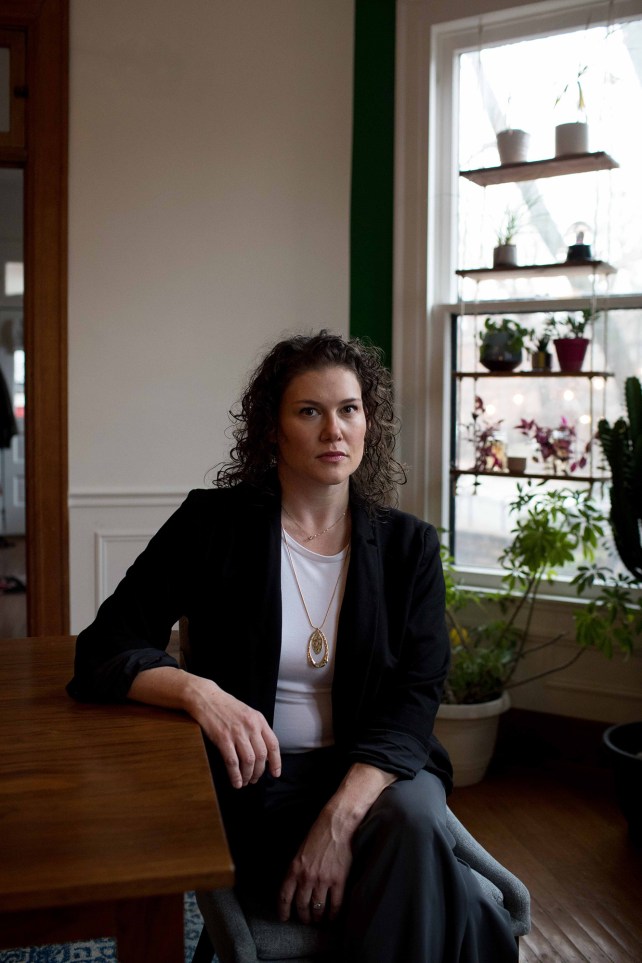
Katie McHugh
Kaiti Sullivan
Even as courts put new abortion restrictions on hold in some states, the precarity of what might happen next is already hurting doctors and the patients they care for. “Any day could be our last providing abortion,” said Dr. Katie McHugh, an obstetrician and abortion provider at clinics in Indiana and Ohio. Before Dobbs, Indiana already had myriad abortion restrictions in place. The new uncertainty has compounded this: In the past year she has had to rearrange her schedule constantly and has struggled to keep staff as her clinics have closed and reopened again in rapid succession, to keep up with the ongoing court case challenging Indiana’s ban. “We are still struggling with the uncertainty around the ban,” she said. “People don’t know if it is in effect, will be in effect, or what the consequences are or will be for pursuing an abortion.” This means that she, her staff, and her patients are operating in a state of constant hurry mixed with fear.
The day I met McHugh, her Indiana center, Women’s Med, had fewer patients than she had been expecting, so she was done early for the day. We sat crunching the peppermints usually left out for patients in her office. Although abortion is still legal in her state, a recent study found that they are down almost 50 percent. This is partly because patients are seeking abortion care in nearby states where they can be sure that the procedure is legal and they’ll get the care they need. “Pregnant people are scared and confused, understandable in light of the intentional deception and misinformation put out by the state,” McHugh says.
“I get the question repeatedly,” says Carrie Rouse, a maternal-fetal medicine doctor in the Indiana University health system who I spoke to in August. “‘If something happens, are you going to be able to take care of me?’” Her specialty involves caring for women with fetal anomalies and serious health risks to the mother’s life. Under Indiana’s law, an abortion should be legal if there’s a serious health risk. But because the standards are unclear, and untested, doctors and the hospitals where these abortions would be performed are left to figure out what qualifies. “I have met with more hospital lawyers in the last two months than in the entire rest of my life,” she says of her 13-year career. Creating those new hospital standards and enforcing them becomes an additional burden on doctors’ already overtaxed time.
That’s especially true given that the government of Indiana has made clear that it will try to find ways to prosecute doctors—even without an abortion ban. In July, state Attorney General Todd Rokita began an investigation into Dr. Caitlin Bernard for an abortion she provided to a 10-year-old rape victim who had come to Indiana from Ohio, where a six-week ban had just gone into effect. Rokita claimed that Bernard failed to report the child abuse that led to the pregnancy and violated patient privacy by speaking to the media about the case. He appeared on Fox News, calling Bernard an “abortion activist acting as a doctor.” Bernard filed a lawsuit alleging that Rokita had drummed up false consumer complaints against her as a way to unseal her patients’ medical records and that he violated the privacy of her patient by discussing details of her case on national television. (Bernard also says she satisfied all reporting requirements about the abortion and child abuse.) The case was moved out of court and in front of the state medical licensing board, which questioned Bernard for hours and eventually issued her a reprimand and a $3,000 dollar fine.
The potential implications of the litigation have reverberated throughout the medical community. “My goodness, this could open up all kinds of medical records [requests],” Alvarez, the personal injury lawyer, says. “Imagine a cardiologist, and they start subpoenaing their records based on some obscure complaint—it’s a slippery slope.” Rokita’s investigation also made clear that the state is eager to make examples out of doctors—even those who are carefully following the law.
This has contributed to an atmosphere of fear and distrust among health care providers. At the end of last summer, when I visited McHugh’s Women’s Med, for instance, I met a pregnant, diabetic woman who was experiencing ketoacidosis, a serious diabetic complication, that seemed to be getting worse, even while she was on medication: At night she fell out of bed from convulsions, and she was unable to keep food down. She’d ended up at Women’s Med thanks to a rather covert referral process. At a visit with her primary care provider about her condition, the doctor hadn’t said anything about abortion. But when she returned home, she found that her provider had sent her a Facebook message with the number for Women’s Med.
Hers was just one example of how the narrow restrictions in these bills don’t allow for the preventative care of patients who are not yet in life-threatening situations but could be. Doctors may be scared or unable to make referrals, and they must operate under constraints made by lawmakers with little medical knowledge of the latitude doctors need to save lives. “There is little general understanding that women with chronic medical conditions, and those who develop new medical conditions during pregnancy, are at very high risk,” Walsh says. “Saving the life of the mother often requires decisions early in pregnancy, not just near the time of delivery. This is not well understood.”
Medicine has long been seen as operating outside political life. But Dobbs has forced this to change: Doctors who have typically considered themselves at a remove from the abortion debate now realize that this is about them, too. But as they’ve begun to advocate over the last year, some have faced censure and scrutiny.
In Indiana, Gabriel Bosslet, an associate professor and pulmonologist at the Indiana University School of Medicine, began organizing his medical community around the issue of abortion back in May, 2022, when Politico leaked the Supreme Court ruling that would go on to gut national abortion access. An energetic man at home in a fast paced critical-care environment, Bosslet always thought of his work as unrelated to politics, let alone abortion care. But then came the state-sanctioned anti-vaccine rhetoric during the pandemic, forcing Bosslet to consider, for the first time in his 20-year career, the dangerous implications of government interference in how he offers care. “If you look at vaccines, gun safety, abortion, all three of these things lead directly to the hospital,” he told me. And yet, lawmakers without medical expertise were dictating how he and his fellow doctors should handle critical emergencies.
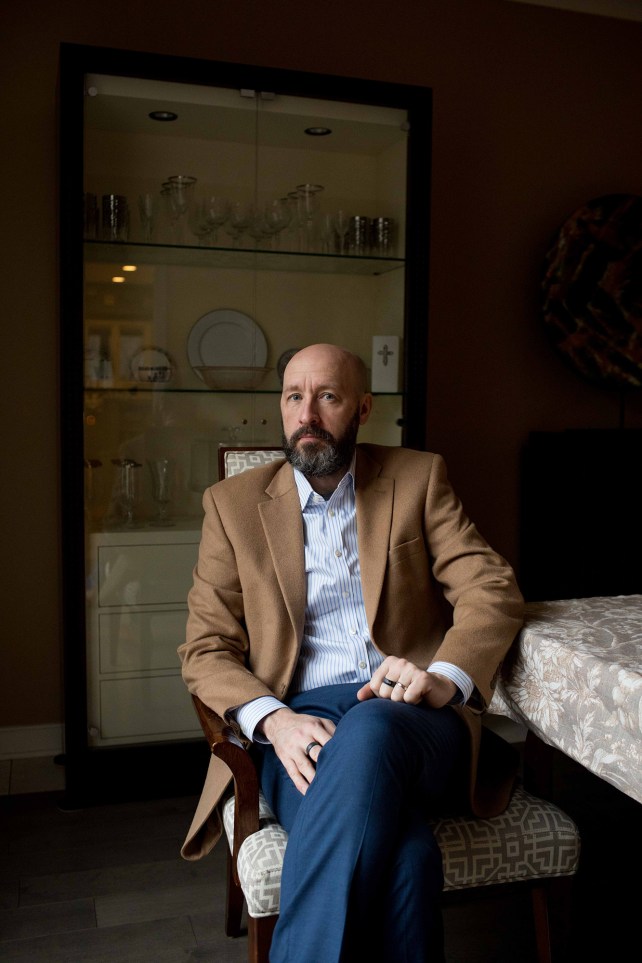
Gabe Bosslet
Kaiti Sullivan
When the Politico leak made clear the Supreme Court was about to enable even more lawmaker meddling in his care for patients, Bosslet took to Twitter: “If you are a clinician in Indiana and you are fed up with the political landscape, DM me as I am getting some folks together for some good trouble.”
Some 40 people from different specialties attended the first Zoom call, including Women’s Med’s McHugh. Overall, the group was distraught over Roe’s impending reversal, and McHugh spoke about what could come next for abortion access in Indiana. Bosslet said it was the first time many of them realized how serious it could be. After the Supreme Court formally issued its Dobbs decision in June, but before lawmakers had introduced the bill banning abortion, the 12-person steering committee of the group, which named itself the Good Trouble Coalition, drafted an open letter in support of reproductive rights and got signatures from more than 1,800 healthcare practitioners. Bosslet and his team raised $20,000 in small donations to place the letter as full-page advertisements in eight newspapers around the state. The letter, which was replicated from a physicians group in Ohio, ended: “Protecting reproductive autonomy protects patients. The lives of Hoosiers depend on it.” The next month, the state legislature called a special session to pass the new abortion ban. Members of Good Trouble, plus some of the open letter signatories, testified in hearings about the bill, successfully persuading lawmakers to include exceptions for rape, incest, and the health of the mother.
One of the people testifying was Tracey Wilkinson, a pediatrician in Indianapolis and a member of Good Trouble. Wilkinson had testified against abortion restrictions before, often among the only doctors wading into the political fray. But on the day of the public hearing, the entire front row of the chamber was a sea of white coats. She was stunned. “I’ve never seen a dermatologist or gastroenterologist testifying with us because this has always been considered someone else’s problem,” she told me later “It was mind-blowing but heartbreaking.” That so many more doctors feel moved to wade into politics is indicative of just how dire patient care could become in the post-Roe landscape.
Good Trouble is doing its best to stave off this dangerous future for women. After Dr. Bernard’s medical hearing, the Good Trouble Coalition published another open letter in the Indianapolis Star. They wrote that the moral and ethical obligations of their profession have compelled them to fight back against the new landscape of abortion bans. “Physicians have an ethical responsibility to seek change when they believe the requirements of law or policy are contrary to the best interests of patients,” they wrote, quoting the American Medical Association’s ethics code. They have successfully fought for legislation that would ensure continued access to pharmacist-prescribed birth control. The group is also turning its attention to next year’s elections, where it plans to focus on ensuring that “science-minded folks,” as Bosslet calls them, win seats in the statehouse, and to encourage healthcare workers to vote. With the protection of a national right to abortion now gone, local lawmakers and courts will hold the keys to what restrictions—or protections—Indiana’s women will now face.
Around the country, other doctors are doing similar work in their own states. In neighboring Ohio, there’s a physician’s group for reproductive rights, and in South Carolina, a pediatrician, Annie Andrews, ran for congress. The obstetrician I spoke with in New Hampshire, who often testifies at her state legislature about reproductive justice, says that since Roe fell she has been asked specifically to mentor others who want to become involved in advocacy.
Some face censure for speaking out, especially when they are associated with an academic institution or are early in their careers. They are not paid for the advocacy work, which must happen on top of demanding jobs at the exact moment that those jobs have already been made harder by politics. Many are tired from slogging through the last year of uncertainty since Dobbs’ passage, and apprehensive about what new misery their legislatures might impose. But they find new fuel in the prospect of bringing medicine towards a model of patient-centered, politician-free care. As Wilkinson put it: “Nothing fuels me more than rage and the dream of one day making this moment seem far away.”
